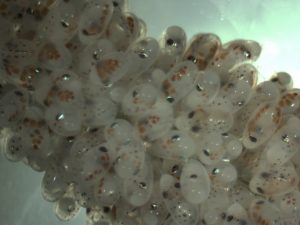Photos’ credit: Dr sagiv Kolkovski (Australia)
Review: Sagiv Kolkovski and Abdel Rahman El Gamal (Founder of this website)


This work has been conducted at the Western Australian Fisheries and Marine Research Laboratories (WAFMRL) based at Hillarys Boat Harbor, north of Perth.
The document of this project covers in details the all of the reproduction stages of octopus (Octopus tetricus) starting with the acquisition of octopus broodstock of between 1.5 – 3 kg, transportation of collected broodstock and then placing them in holding tanks whereas stocking density, sea water flow, and filtering has beed described. The project investigated also the broodstock feeding in regard to timing and frequency (once/day) and feed diet which mainly was fresh Pilchards, Prawns, Lobster, Abalone or Crab.
The mating system has been shared including key information about instant mating or induced mating if natural mating was delayed using temperature as a triggering factor whether through raising or lowering water temperature by 2-3°C. The fecundity has been estimated by 100,000 to 200,000 of very small eggs for each female of the mentioned size range whereas egg clutch -as shown in the inserted picture- is guarded by the female during incubation period that lasts 35-40 days at the experimental temperature keeping in mind that raising water temperature to 21-23 °C the incubation period is reduced to 25-30 days, while lower temperatures (16-18 °C) can increase incubation time up to 45-50 days.
The embryonic development of hatched octopus has been addressed highlighting the significant bottleneck in the breeding system as represented in the almost mass mortality of “paralarvae” produced during the course of the study ending with only an individual who could reach juvenile octopus that was nicknamed “Bob” (Shown in the picture) which represented to the team a rare and exciting event which deserved to held a birthday party in Bob’s honor.
The research team is confident that the knowledge gained related to the closing of the life cycle of O. tetricus in areas of broodstock management and natural induced spawning as well as handling of eggs and paralarvae and required environmental factors and nutrition will assist in accomplishing a commercial octopus breeding program in the future.
This study has been a part of a larger project that aimed to close the life cycle of the octopus and produce juveniles to be used in aquaculture especially wild-capture octopus is unable to keep up with demand by Australian consumers. The tank-based production system has been another part of this project in which relied on wild-caught juveniles, the bycatch of adult harvest and this part will be addressed in a separate post.
For whoever interested in this subject matter, you may visit the full story on the link below:
